
John Rennie FRSE FRS was a Scottish civil engineer who designed many bridges, canals, docks and warehouses, and a pioneer in the use of structural cast-iron.

The Kennet and Avon Canal is a waterway in southern England with an overall length of 87 miles (140 km), made up of two lengths of navigable river linked by a canal. The name is used to refer to the entire length of the navigation rather than solely to the central canal section. From Bristol to Bath the waterway follows the natural course of the River Avon before the canal links it to the River Kennet at Newbury, and from there to Reading on the River Thames. In all, the waterway incorporates 105 locks.

The Stratford-upon-Avon Canal is a canal in the south Midlands of England. The canal, which was built between 1793 and 1816, runs for 25.5 miles (41.0 km) in total, and consists of two sections. The dividing line is at Kingswood Junction, which gives access to the Grand Union Canal. Following acquisition by a railway company in 1856, it gradually declined, the southern section being un-navigable by 1945, and the northern section little better.
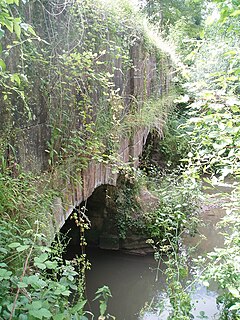
The Dorset and Somerset Canal was a proposed canal in southwestern England. The main line was intended to link Poole, Dorset with the Kennet and Avon Canal near Bradford on Avon, Wiltshire. A branch was to go from the main line at Frome to the southern reaches of the Somerset coalfield at Nettlebridge. Construction of the branch started in 1786, using boat lifts rather than locks to cope with changes of level, but the company ran out of money and the canal was abandoned in 1803, never to be completed.

The canal network of the United Kingdom played a vital role in the Industrial Revolution. The canals permitted the creation of wealth, by industry, that led to the British Empire in the Victorian Era. The UK was the first country to develop a nationwide canal network, which expanded to nearly 4,000 miles in length. The canals allowed raw materials to be transported to a place of manufacture, and finished goods to be transported to consumers, more quickly and cheaply than via a land based route.

Melksham Without is a civil parish in the county of Wiltshire, England. It surrounds, but does not include, the town of Melksham and is the largest rural parish in Wiltshire, with a population of 7,230 and an area of 29 square kilometres.

Claverton Pumping Station in the village of Claverton, in the English county of Somerset, pumps water from the River Avon to the Kennet and Avon Canal using power from the flow of the River Avon. It is a Grade I listed building, having been upgraded from Grade II in 2019.

The Leominster Canal was an English canal which ran for just over 18 miles from Mamble to Leominster through 16 locks and a number of tunnels, some of which suffered engineering problems even before the canal opened. Originally the canal was part of a much more ambitious plan to run 46 miles from Stourport to Kington.
Josias Jessop (1781–1826) was a noted canal engineer, and second son of William Jessop, one of the great canal engineers of the late eighteenth and early nineteenth centuries. He was trained by his father, and worked under him on his early projects, but proved his abilities during the construction of Bristol harbour. He became an independent consulting engineer from 1811. He died fourteen years later, a little before he reached the age of 45.
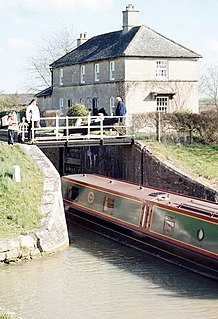
The Semington Locks are situated at Semington, Wiltshire on the Kennet and Avon Canal, England.
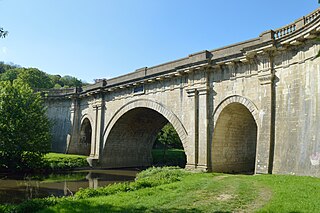
Dundas Aqueduct carries the Kennet and Avon Canal over the River Avon and the Wessex Main Line railway from Bath to Westbury. The aqueduct is near Monkton Combe, Somerset, and is about 2 1⁄2 miles (4 km) southeast of the city of Bath.
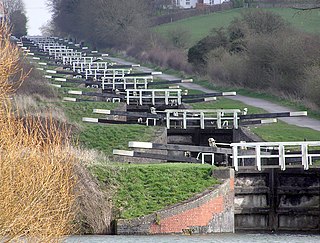
Caen Hill Locks are a flight of 29 locks on the Kennet and Avon Canal, between Rowde and Devizes in Wiltshire, England.
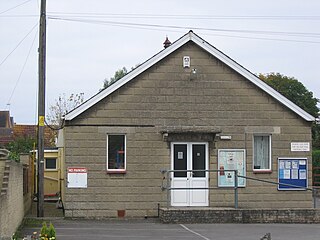
Semington is a village and civil parish in Wiltshire, England. The village is about 2 miles (3 km) south of Melksham and about 3 miles (5 km) northeast of Trowbridge. The parish includes the hamlets of Little Marsh and Littleton.

John Hore was an English engineer, best known for making the River Kennet and River Avon navigable. Hore was one of the earliest English canal engineers, and Sir Alec Skempton wrote that he was "in the first rank among the navigation engineers". The Hutchinson Chronology of World History described his work on the Kennet navigation as "[setting] a new standard for inland waterways, and is an important forerunner of the canals of the Industrial Revolution".

New Semington Aqueduct carries the Kennet and Avon Canal over the carriageway of the A350 road Trowbridge Bypass, at Semington in west Wiltshire, England. Although the construction of new canals is no longer common practice in England, new aqueducts such as this are sometimes built in relation to new roads or road widening schemes.
Josiah Clowes (1735–1794) was a noted English civil engineer and canal builder. His early years were spent running a canal carrying company with Hugh Henshall, and although he worked on some canal projects before 1783, that year marked his switch to being an engineer. His first major project included the Sapperton Tunnel on the Thames and Severn Canal, which despite huge engineering difficulties, gained him a reputation which enabled him to become the first great tunnelling engineer, responsible for three of the four longest canal tunnels built.
William Bennet was an English civil engineer, noted for his work on canals. Nothing is known of his early life or family history, but details of his work from about 1790 until 1826 are documented. His major projects were for the Dorset and Somerset Canal and the Somersetshire Coal Canal.
The Berks and Hants Canal, incorporated as the Berkshire and Hampshire Junction Canal Company, was a proposed canal in the English counties of Berkshire and Hampshire. Proposals for the waterway originate after the completion of the Kennet and Avon Canal and the Basingstoke Canal in the 1790s, with a view to connecting the two canals.
John Blackwell was an English civil engineer, known for his work as superintending engineer of the Kennet and Avon Canal under John Rennie and later as the canal company's resident engineer.















